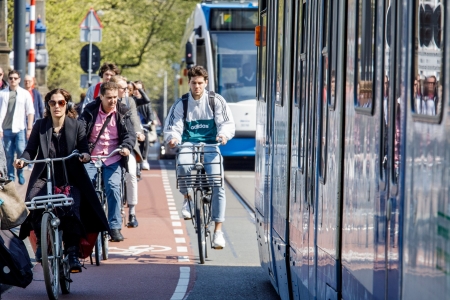Vehicle size
A public transport vehicle is intended to transport several people and is therefore relatively large and heavy. For that reason, crash opponents, often vulnerable ones, sustain more serious injuries in crashes involving a bus or tram [13] [14] [15]. The design of the bus or tram front also affects injury severity. The (relatively) flat fronts of buses and trams increase injury severity, as casualties slam into the steal fronts or glass windscreens at high speed [14] [16]. In addition, public transport vehicles have a longer braking distance than other motor vehicles because of their weight and, in the case of trams, because of the smooth surface of the rails [1]. Finally, a rail vehicle (tram or train) cannot swerve to avoid collision [14].
On account of its size, a tram or bus may also indirectly be involved in road crashes by blocking the sight lines of other road users. In 1997-2002 police reports of crashes near Paris, one of the the crash scenarios was that of a car overtaking a bus and overlooking a pedestrian [3].
Separate priority rules for trams
Not all road users are well aware of the priority rules for trams being different [6]. If priority is not regulated by road signs or signals, trams always have right of way over other traffic. In 70% of tram crashes, research dating back to 2000 shows that crash opponents did not give the tram right of way, nor let it pass [1]. Warning signals, if sounded too late or too early, are not heeded and conflicting signals trigger incorrect reactions [7].
